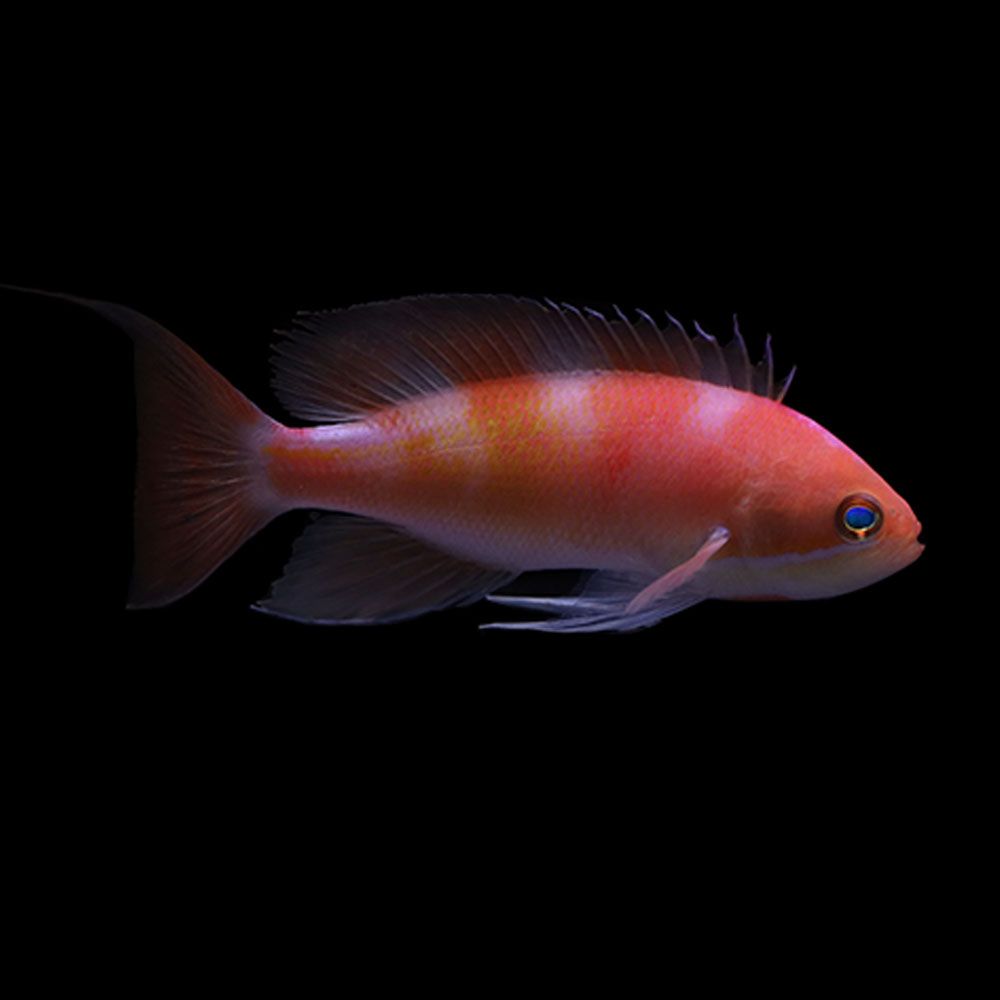ONLINE STORE MINI
Scroll down for a sneak peek at our online store. For full functionality and experience, click the button below to browse the full online store!!
Kashiwae Anthias (Pseudanthias kashiwae)
Kashiwae Anthias (Pseudanthias kashiwae)
Description:
Overview: The Kashiwae Anthias is a stunning and active species known for its vibrant coloration and schooling behavior. These fish are a fantastic addition to any saltwater aquarium, adding a splash of color and dynamic movement. Ideal for both novice and experienced aquarists, the Kashiwae Anthias thrives in well-maintained environments and provides endless visual appeal.
Appearance: The Kashiwae Anthias is visually captivating, featuring a body that ranges from bright pink to deep orange, often with a gradient effect. Males tend to exhibit more intense colors , females are typically more subdued in color but still display beautiful shades of pink and orange. The vivid coloration makes them a standout addition to any marine tank.
Behavior: Kashiwae Anthias are known for their peaceful and social nature, often forming schools in the wild. In the aquarium, they thrive when kept in groups, which allows them to exhibit natural behaviors and reduces stress. These active swimmers prefer the mid to upper levels of the tank and are constantly on the move, adding dynamic movement to the aquarium environment.
Diet: Kashiwae Anthias are carnivores and thrive on a varied diet rich in meaty foods. They do well on a mix of high-quality flake food, pellets, and frozen foods such as brine shrimp, mysis shrimp, and finely chopped seafood. Providing a varied diet helps maintain their health and vibrant coloration. Regular feedings, ideally multiple times a day, are important to keep them healthy and active.
Tank Requirements: Kashiwae Anthias require a spacious aquarium of at least 70 gallons to accommodate their active nature and schooling behavior. Providing plenty of live rock for hiding spots and swimming space is essential. Maintaining optimal water quality and stable parameters is crucial for their well-being.
Tankmates: Kashiwae Anthias are generally peaceful and can be housed with a variety of other non-aggressive marine species. Suitable tankmates include clownfish, gobies, tangs, and other peaceful fish. Avoid housing them with overly aggressive species that may intimidate them or compete for food. Keeping them in a group with one male and multiple females is recommended, although it can be challenging to find them all at once.
Reef Compatibility: Kashiwae Anthias are reef-safe and do not harm corals or invertebrates. Their vibrant coloration and active swimming add dynamic movement and visual appeal to the tank. They thrive in reef environments where they can find plenty of hiding spots and open spaces to swim.
Max Size: Kashiwae Anthias can grow up to 5 inches (13 cm) in length. Due to their active nature and need for swimming space, they require a spacious and well-maintained aquarium to thrive.
Origin: Kashiwae Anthias are commonly found in the Indo-Pacific region, particularly around the waters of Japan and the Philippines.
Sexual Dimorphism: Kashiwae Anthias exhibit sexual dimorphism, with males displaying more vibrant coloration and larger, more ornate fins compared to females. The males' colorful display is often used to attract females and establish dominance.
Interesting Facts:
- Kashiwae Anthias are known for their stunning pink and orange coloration, making them a favorite among marine aquarists.
- They are relatively hardy and can adapt well to captivity with proper care and a well-maintained environment.
- Kashiwae Anthias are active swimmers and enjoy exploring their surroundings, often schooling together in the aquarium.
- Their peaceful nature and striking appearance make them a visually captivating addition to any reef tank.
Disclaimer: Aquarium Arts cannot guarantee compatibility with your current fish or the fish you buy and cannot be held liable for fish lost due to aggression.


